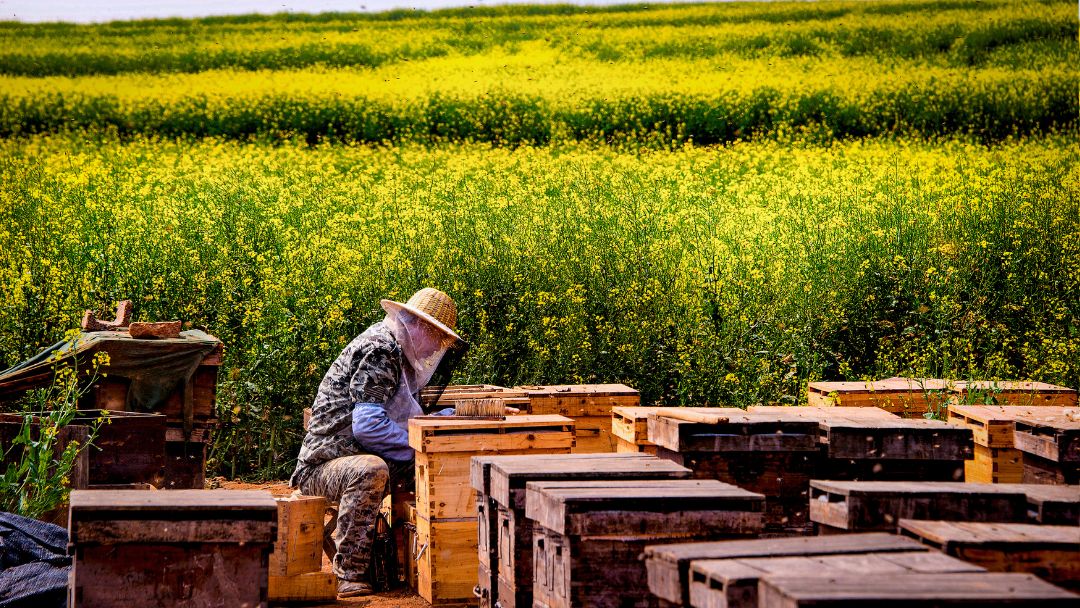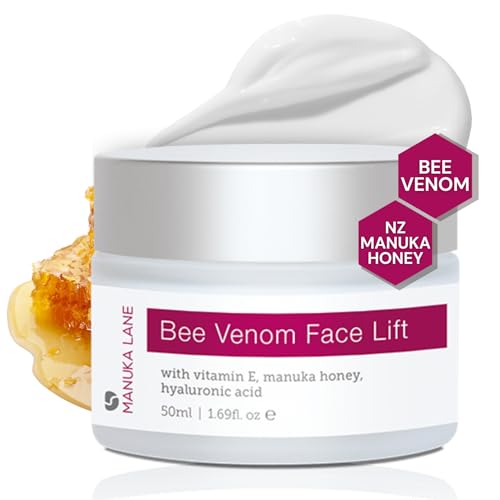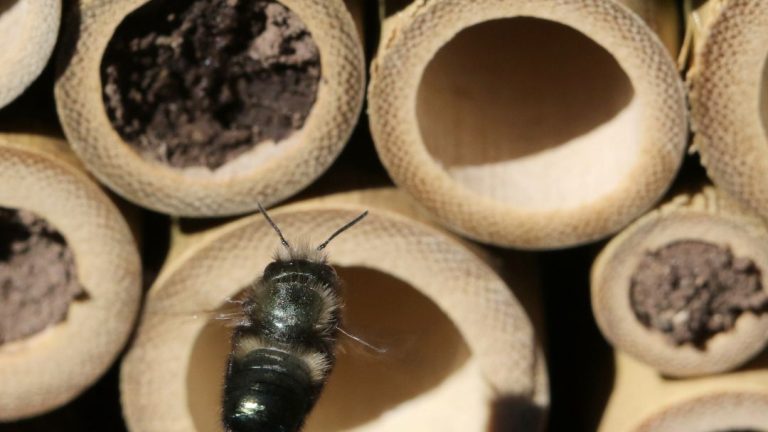How Many Beehives Do I Need? Optimal Number for Beekeeping Success
To determine how many beehives you need, consider the scale of your beekeeping operation, available space, and your objectives. Then, calculate approximately one beehive for every 10,000 to 20,000 square feet within your apiary.
Generally, a single hive can adequately pollinate a small garden or orchard, while larger operations may require multiple hives for improved pollination and honey production. It is important to strike a balance between the number of hives and the resources you can dedicate to their management and maintenance.
Keep in mind that beekeeping requires careful attention to hive health and regular inspections. With these factors considered, you can determine the appropriate number of beehives needed for your specific situation.
Factors To Consider When Deciding On The Number Of Beehives
Climate And Weather Conditions
One crucial factor to consider when determining the number of beehives you need is the climate and weather conditions in your area. Bees are highly sensitive to changes in temperature, humidity, and rain patterns, which can affect their foraging and honey production.
If you reside in an area with a mild climate, where temperatures remain fairly steady throughout the year, you may require fewer beehives. On the other hand, if you live in a region with extreme temperature fluctuations or harsh winters, you might need more beehives to support the bees during the challenging conditions.
Additionally, different bee breeds have varying temperature requirements. Some bee species are better suited for colder climates, while others thrive in warmer environments. Taking these factors into account will help you determine the optimal number of beehives for your specific climate.

Available Space For Beehives
Another crucial consideration when deciding on the number of beehives is the available space on your property. Bees require adequate room to forage, gather pollen, and access water sources without overcrowding. Moreover, ample space ensures proper ventilation within the hives, reducing the risk of diseases and pests.
If you have limited space, such as a small backyard or rooftop, you might need to carefully plan and maximize the utilization of your chosen area. Consider vertical hive structures or compact hive designs that allow for stacking multiple beehives without taking up excessive space horizontally.
Conversely, if you own a large expanse of land, you can accommodate a higher number of beehives, providing the bees with an abundant foraging area that encourages honey production and swarm prevention.
Local Regulations And Restrictions
When determining the number of beehives, it is essential to consider any local regulations and restrictions that govern beekeeping in your area. Different regions have specific guidelines dictating the maximum number of beehives allowed per property size and zoning restrictions.
Research and familiarize yourself with the local laws and regulations to avoid any potential legal issues and ensure you comply with the recommended beekeeping standards. By adhering to these guidelines, you can maintain harmony with your neighbors and contribute to the preservation of local ecosystems.
Remember, for beginners, starting with a smaller number of beehives is often a more manageable approach. As you gain experience and confidence in beekeeping, you can assess the suitability of your property and gradually scale up your beekeeping operations.
Benefits Of Having Multiple Beehives
Having multiple beehives can provide beekeepers with a range of benefits that go beyond simply increasing honey production.
By expanding your apiary, you can enhance pollination, spread the risk of colony loss, and enjoy a more sustainable and thriving beekeeping operation.
Let’s explore these advantages in detail:
Increased Honey Production
One of the primary benefits of having multiple beehives is the potential for increased honey production.
Each beehive houses a colony of bees, and with more beehives, you have a larger workforce of diligent honeybees collecting nectar, pollinating flowers, and producing honey.
The more beehives you have, the greater the number of foraging bees at your disposal, resulting in a higher honey yield.
Enhanced Pollination
Expanding your beekeeping operation to include multiple beehives can significantly contribute to enhanced pollination in your area.
Bees are vital pollinators for crops, plants, and trees, and by having more beehives, you can increase the bee population and their foraging activities.
This means a higher chance of successful pollination, leading to improved fruit and seed development, greater crop yields, and a more robust ecosystem. Multiple beehives can play a crucial role in optimizing pollination across a larger area.
Spread The Risk Of Colony Loss
By maintaining multiple beehives, you can effectively spread the risk of colony loss. Beekeepers understand that colony losses can occur due to various factors such as diseases, pests, extreme weather conditions, or even queen failure.
However, having several beehives provides a safety net and reduces the overall impact of losing one colony. In the unfortunate event of colony loss, you still have other beehives to support the honey production, pollination efforts, and overall sustainability of your beekeeping enterprise.
Moreover, spreading your bee colonies across different locations can further mitigate the risk of all colonies being affected by a single localized issue. This proactive approach helps to safeguard the health and productivity of your overall beekeeping operation.
In conclusion, having multiple beehives can greatly benefit beekeepers. With increased honey production, enhanced pollination, and the ability to spread out the risk of colony loss, beekeepers can create a more sustainable and thriving beekeeping business.
Expanding your apiary not only adds resilience to your operation but also contributes to the preservation of these amazing pollinators and the ecosystems they support.
Optimal Number Of Beehives Based On Beekeeper’s Goals
The optimal number of beehives depends on the goals of the beekeeper.
Whether you are a hobbyist beekeeper, have a side business, or are involved in commercial beekeeping, understanding the right number of beehives can make a significant difference in your success.
Hobbyist Beekeeper
For those who are interested in beekeeping as a hobby, maintaining a few beehives can be a rewarding and enjoyable experience. As a hobbyist beekeeper, the primary goal is to learn about bees, contribute to bee conservation efforts, and enjoy the benefits of honey production.
Typically, starting with one or two beehives is recommended for hobbyists. This allows you to focus on learning the basics of beekeeping and understand the needs of the bees.
It also provides an opportunity to manage the hives effectively without feeling overwhelmed. As you gain more experience and confidence, you may choose to expand your operation by adding a few more beehives.
Side Business Beekeeper
Some beekeepers may have aspirations of turning their passion for bees into a side business. Whether you plan to sell honey, or beeswax products, or offer pollination services, having a certain number of beehives is crucial to meet the demands of the market and generate a consistent income.
As a side business beekeeper, you will need to evaluate the time and resources you can dedicate to your venture. Depending on your availability, it is recommended to start with around 10 to 20 beehives.
This number allows you to produce a sufficient quantity of honey or other products for sale while maintaining a manageable workload. It also provides room for expansion if your business grows in the future.
Commercial Beekeeper
Commercial beekeeping involves a larger scale of operations, focusing on maximizing honey production, pollination services, and profitability. The number of beehives required for commercial beekeeping can vary significantly based on the targeted market, available resources, and business objectives.
Commercial beekeepers typically manage a vast number of beehives, often ranging from hundreds to thousands. This allows them to meet the demands of commercial customers, such as large-scale honey processors or agricultural operations requiring pollination services.
The optimal number of beehives for commercial beekeepers ultimately depends on their capacity to handle the necessary resources, including beekeeping equipment, infrastructure, and labor.
Regardless of the category you fall into, it’s important to carefully assess your goals, resources, and level of experience before determining the number of beehives that suit you best.
Remember, beekeeping is both an art and a science, requiring patience, dedication, and ongoing learning. By establishing the right number of beehives, you can embark on a successful beekeeping journey that aligns with your aspirations and capabilities.
Calculating The Number Of Beehives Needed
When starting a beekeeping venture, one of the key considerations is determining the number of beehives needed. Whether you are a beginner or an experienced beekeeper, understanding the factors involved in this calculation is crucial for the success of your apiary.
By estimating honey production goals, considering beehive population dynamics, and assessing hive management and maintenance efforts, you can make an informed decision on the number of beehives required for your beekeeping operation.
Setting honey production goals helps you determine the quantity of beehives needed to fulfill your desired harvest. Consider the following factors when estimating your honey production goals:
- Available Resources: Assess the amount of nectar-producing flowers in your area and the average honey yield per beehive in your region. This information will help you understand the honey production potential of your location.
- Target Market: Identify the target market for your honey products. Evaluate the expected demand and potential sales. This knowledge will guide you in determining the volume of honey you need to produce.
- Personal Consumption: If you plan to keep bees for personal use rather than commercial purposes, calculate your honey consumption needs. This will help you estimate how much honey you want to produce for personal consumption.
Understanding the population dynamics of beehives is essential for calculating the number of beehives needed. Consider the following factors:
- Colony Strength: Evaluate the strength of individual bee colonies in terms of bee population and resources. A strong colony is better equipped to produce more honey.
- Swarming: Be aware of the natural reproductive behavior of bees known as swarming. This can result in a division of the existing colony and the formation of new colonies. Factoring in the possibility of swarming is important to maintain a consistent number of productive hives.
- Survival Rate: Take into account the potential loss of bee colonies due to environmental factors, diseases, or pests. Adjust the number of beehives accordingly to maintain a sustainable population.
Managing and maintaining beehives requires time, effort, and resources. Consider the following aspects to determine the number of beehives you can effectively manage:
- Time Availability: Assess your availability and dedication to beekeeping activities. The more time you can allocate to hive inspections, honey harvesting, and other beekeeping tasks, the more beehives you can manage.
- Experience and Skills: Consider your level of experience and beekeeping skills. Beginners may want to start with a smaller number of beehives and gradually increase as they gain more knowledge and confidence in managing multiple hives.
- Resources: Evaluate the resources you have at hand, such as equipment, protective gear, and storage space for honey. Ensure you have adequate resources to manage the number of beehives you plan to keep.
By carefully considering your honey production goals, understanding beehive population dynamics, and assessing your hive management and maintenance capabilities, you can accurately calculate the number of beehives needed for your beekeeping operation.
This calculation will lay the foundation for a successful and fulfilling journey into beekeeping.
Tips For Beekeepers With Limited Space
Having limited space doesn’t mean you can’t enjoy the rewards of beekeeping. With a few clever strategies, you can still have a thriving beehive while making the most of the space you have.
Utilizing Vertical Space
If horizontal space is an issue, why not think vertically? Utilizing vertical space is a smart way to maximize your beehive capacity without taking up too much ground area.
Vertical beehive setups are becoming increasingly popular among urban beekeepers and those with limited space. By using vertical hive frames and stackable components, you can stack multiple beehives, allowing your bees to make better use of the space.
Benefits of utilizing vertical space:
- Better use of limited space
- Increase hive capacity per square foot
- Easier hive management and inspection
- Reduced risk of swarming due to better swarm management
- Enhanced ventilation and pest control
- Improved honey extraction process
Implementing Nucleus Hives
In addition to utilizing vertical space, another effective strategy for beekeepers with limited space is implementing nucleus hives. Also known as nucs, these smaller-sized hives are perfect for beekeepers who want to maintain multiple colonies within a confined space.
Nucleus hives are essentially mini hives that consist of fewer frames and bees. They allow for easier transportation and manipulation, making them an ideal option for beekeepers with limited space.
Advantages of implementing nucleus hives:
- Requires less space for each hive
- Allows for the management of multiple colonies
- Easier to perform inspections and maintenance
- Increased likelihood of successful queen rearing
- Opportunity for swarm prevention and splitting
Alternative Beekeeping Methods For Limited Space
For beekeepers with extremely limited space, alternative beekeeping methods offer innovative solutions. These methods are designed to accommodate space constraints while still allowing for beekeeping activities.
Some popular alternative beekeeping methods include:
- Top-Bar Hives: These hives are horizontal and have bars instead of frames, making them easier to manage in small spaces.
- Warre Hives: Warre hives are vertical and compact, allowing for easy expansion upwards as the colony grows.
- Flow Hives: Flow hives are modern and space-efficient, making honey extraction a breeze without disturbing the bees.
- Beekeeping on Rooftops: Utilizing rooftops for beekeeping is a rising trend in urban settings, making use of otherwise unused space.
By exploring these alternative beekeeping methods, you can find the one that best suits your limited space situation while still enjoying the benefits of beekeeping.
Conclusion
Determining the number of beehives you need depends on various factors such as goals, resources, and experience. It’s important to consider beekeeping regulations, location, and available space to ensure the well-being of your bees.
Consulting with local beekeeping associations or experienced beekeepers can provide valuable insights and guidance.
By making informed decisions, you can embark on a successful beekeeping journey that benefits both the bees and the environment. Happy beekeeping!



